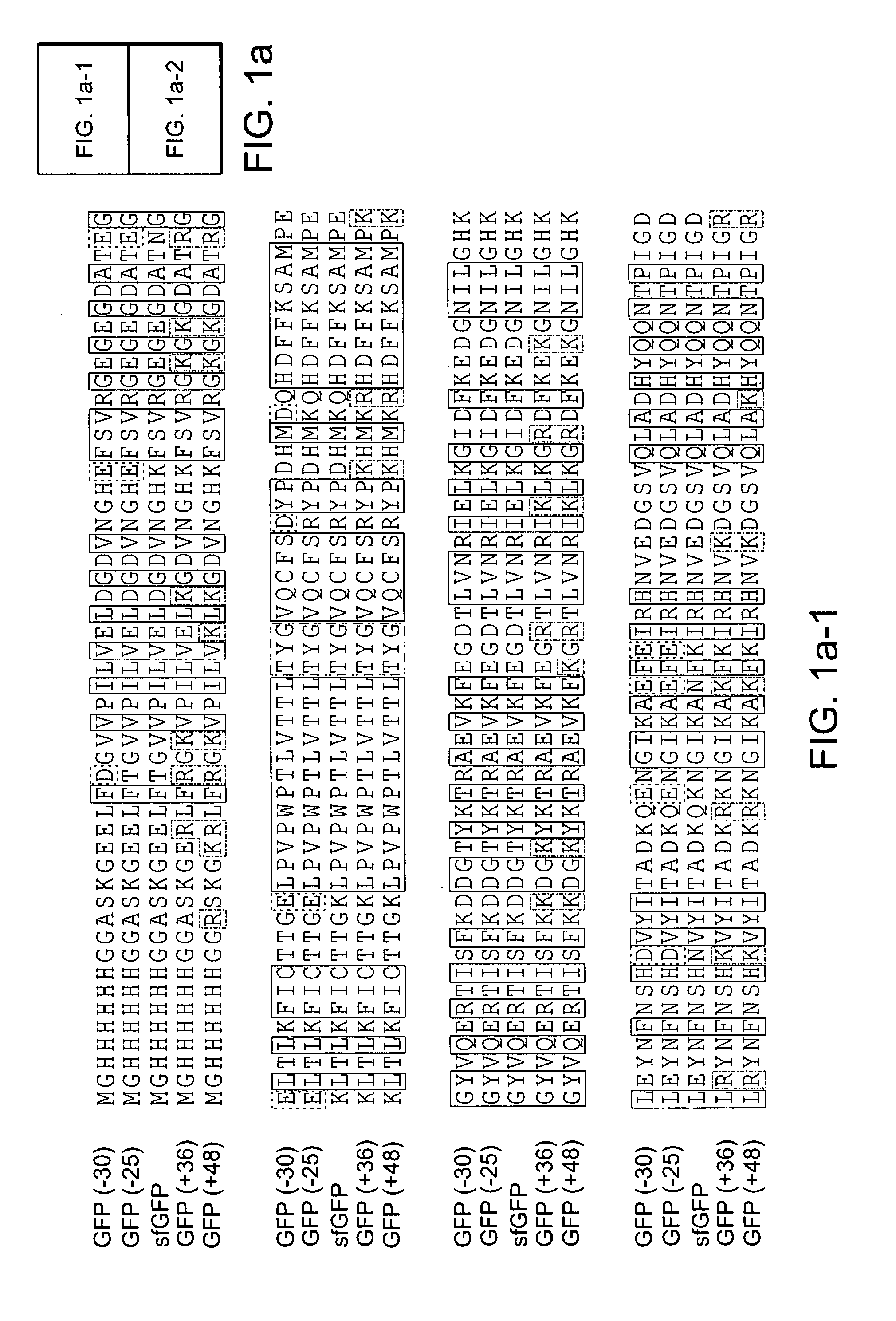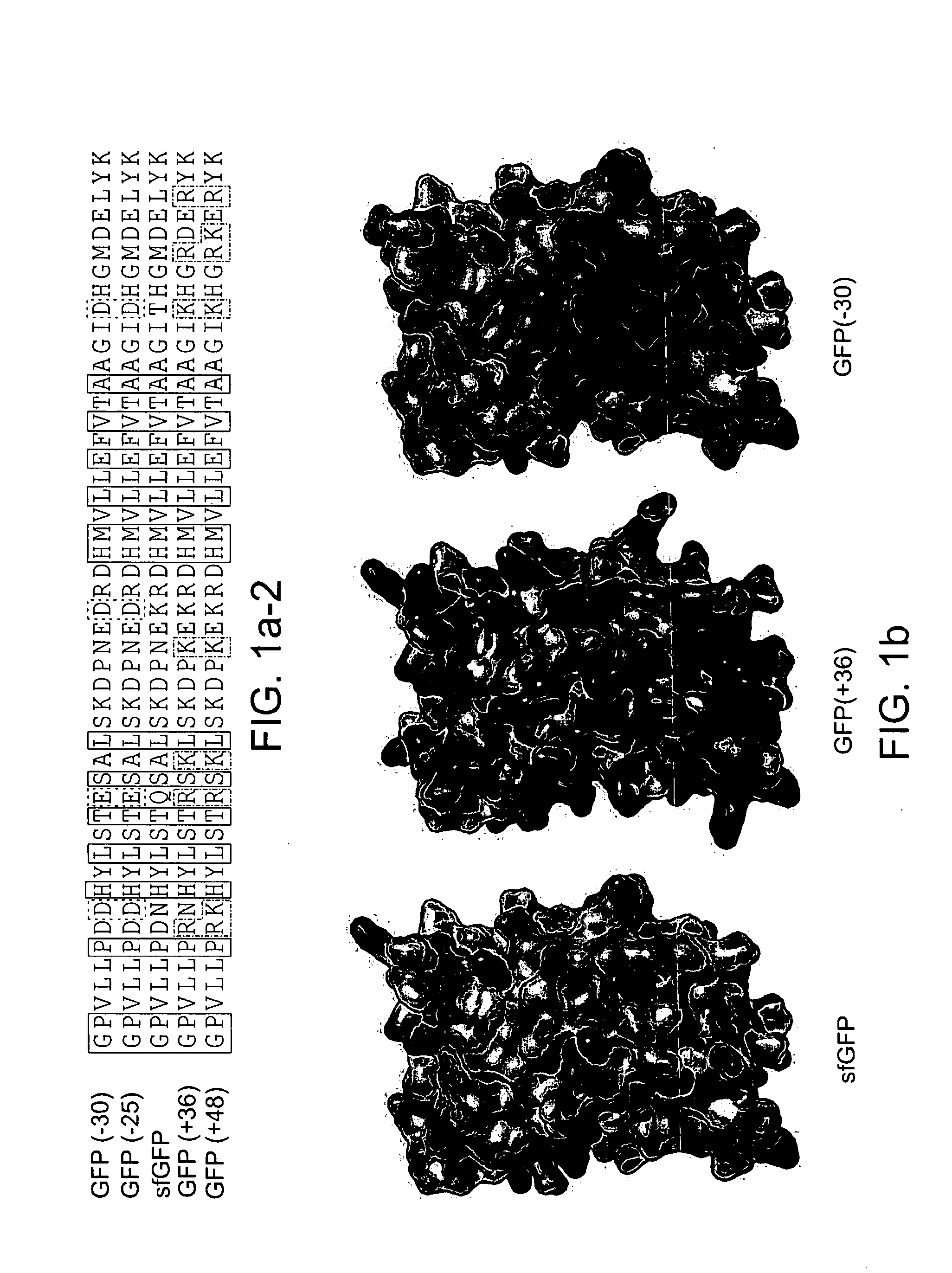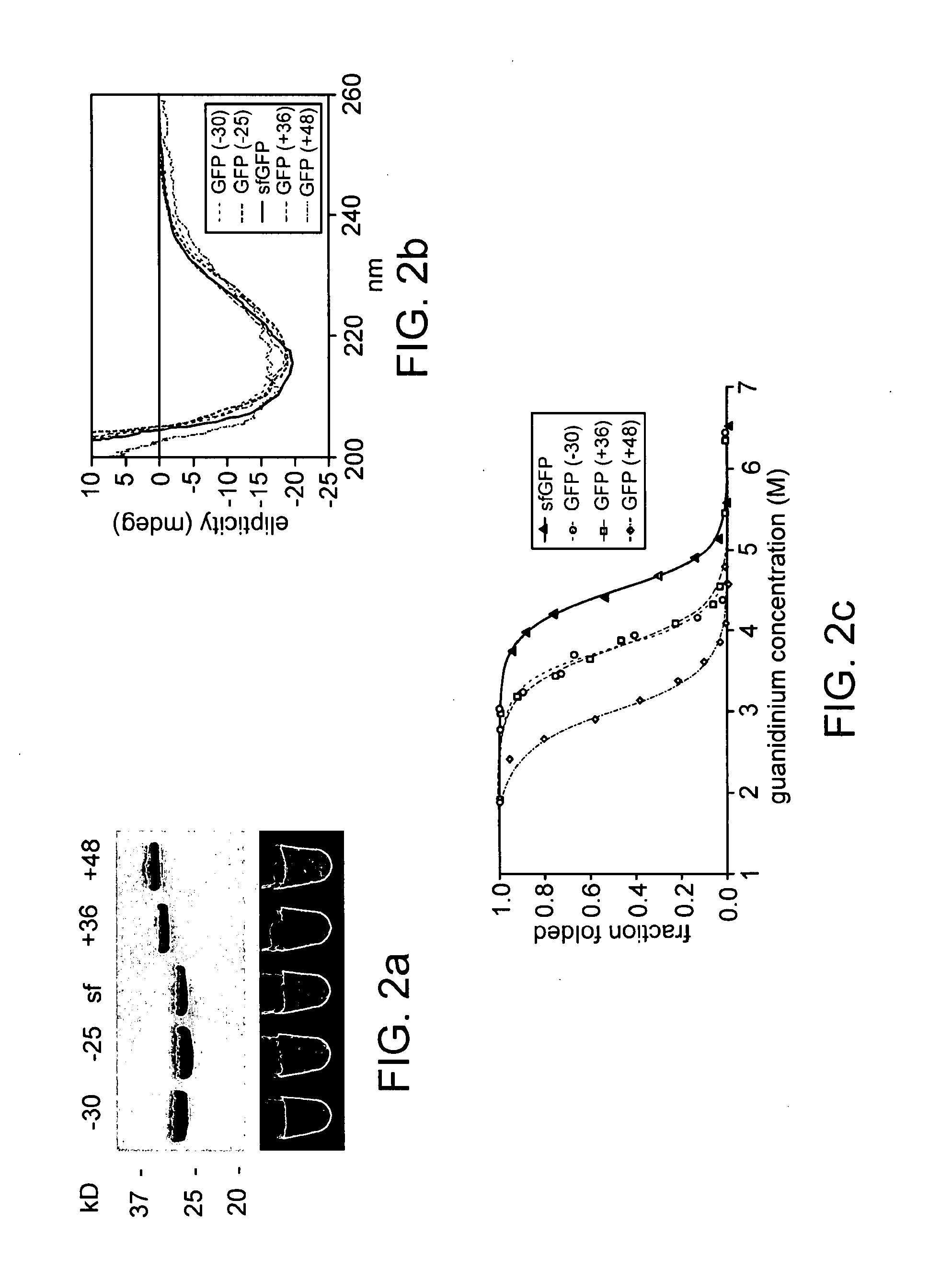Protein surface remodeling
a surface remodeling and protein technology, applied in the field of protein surface remodeling, can solve the problems of computationally designed proteins, aggregation is a particularly vexing problem, protein misbehavior is aggregation, etc., and achieve the effects of more resistant to aggregation, more resistant to denaturation, and more resistant to unfolding
- Summary
- Abstract
- Description
- Claims
- Application Information
AI Technical Summary
Benefits of technology
Problems solved by technology
Method used
Image
Examples
example 1
Supercharging Proteins can Impart Extraordinary Resilience
[0053]Protein aggregation, a well known culprit in human disease (Cohen, F. E.; Kelly, J. W., Nature 2003, 426, (6968), 905-9; Chiti, F.; Dobson, C. M., Annu Rev Biochem 2006, 75, 333-66; each of which is incorporated herein by reference), is also a major problem facing the use of proteins as therapeutic or diagnostic agents (Frokjaer, S.; Otzen, D. E., Nat Rev Drug Discov 2005, 4, (4), 298-306; Fowler, S. B.; Poon, S.; Muff, R.; Chiti, F.; Dobson, C. M.; Zurdo, J., Proc Natl Acad Sci USA 2005, 102, (29), 10105-10; each of which is incorporated herein by reference). Insights into the protein aggregation problem have been garnered from the study of natural proteins. It has been known for some time that proteins are least soluble at their isoelectric point, where they bear a net charge of zero (Loeb, J., J Gen Physiol 1921, 4, 547-555; incorporated herein by reference). More recently, small differences in net charge (±3 charge ...
PUM
| Property | Measurement | Unit |
|---|---|---|
| pH | aaaaa | aaaaa |
| pH | aaaaa | aaaaa |
| pH | aaaaa | aaaaa |
Abstract
Description
Claims
Application Information
 Login to View More
Login to View More - R&D
- Intellectual Property
- Life Sciences
- Materials
- Tech Scout
- Unparalleled Data Quality
- Higher Quality Content
- 60% Fewer Hallucinations
Browse by: Latest US Patents, China's latest patents, Technical Efficacy Thesaurus, Application Domain, Technology Topic, Popular Technical Reports.
© 2025 PatSnap. All rights reserved.Legal|Privacy policy|Modern Slavery Act Transparency Statement|Sitemap|About US| Contact US: help@patsnap.com



